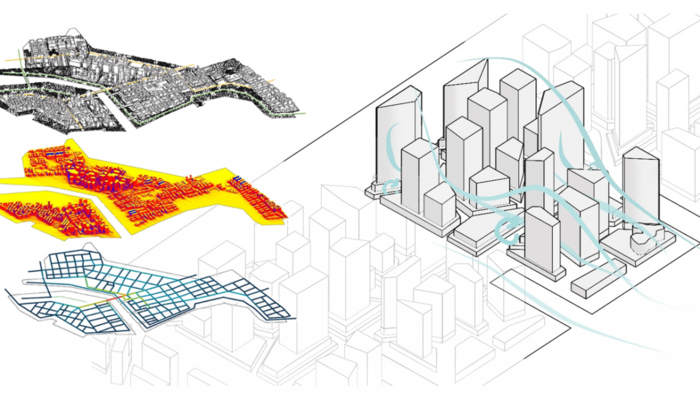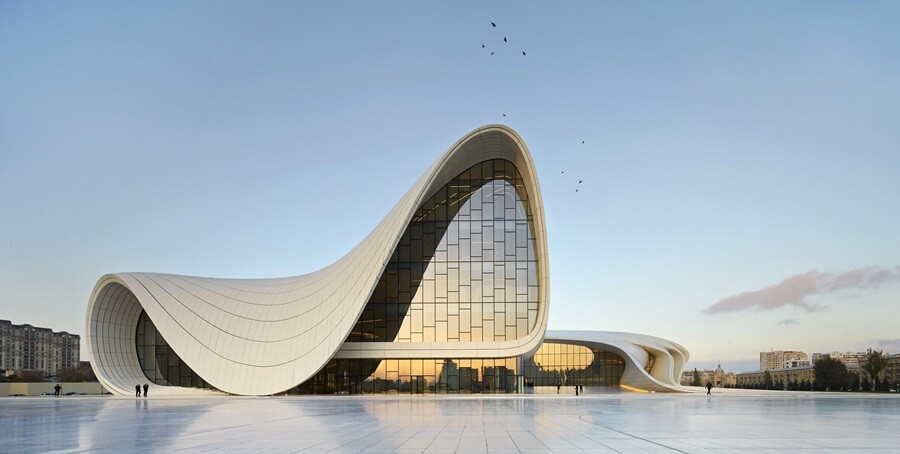Frequently Asked Questions on Computational Design in 2025

Table of Contents
Let’s take a moment and recall the silhouettes of the Guggenheim Museum in Spain. The harmonious structure etched itself on our brains with its titanium fabric-wrapped facade. While the Guggenheim Museum is an exceptional visual marvel, it is a planned manifestation of Computational Design. A seamless blend of modern and contemporary art forms, this titanium facade shifts dynamically, reflecting almost like a mirror, interacting with the sun.
Introduction to Computational Design
What is Computational Design really? Think of it as an approach that uses digital tools and software to evaluate, automate, and create various tasks. This ultimately helps with exploring multiple design options and, analysing and optimising design performance. Computational design is a comprehensive design approach that uses algorithms and parameters to solve design problems with advanced computer processes. From simple designs in the truism spread to complex forms, computational design can come in handy with its efficiency in leveraging artificial and human intelligence to produce multiple design iterations and designs.
*Fact: Every out-of-the-box parametric structure that steals your gaze is not computational design. Computational design is much more than that. Form finding is one of the subset processes in computational designing.*
Computational design and engineering have fundamentally transformed the landscape of architectural design, and the way designers and engineers conceive, design, and construct buildings. Computational design has a profound impact on modern architecture by implementing complex design handling, parametric design, generative design, and optimisation and performance.
Let’s mentally transport ourselves to the Beijing National Stadium, also known as the Bird’s Nest. This exemplar of modern architecture was designed for the 2008 Beijing Olympics by architects Herzog & de Meuron with artist Ai Weiwei and CAD pioneer Arupsport. This architectural piece of thought was designed using Computational Design tools that were crucial in conceptualising and drafting this complex form. Advanced modelling software also allows architects to utilise and design efficiently ensuring aesthetic and structural ability.
But wait, using traditional tools to design can be as easy as pie right? Why take the computational route at all? Here’s why:
Also Read : Understanding Computational Design (The Ultimate Guide)
How is Computational Design different from Traditional Design?
Traditional design methods rely on manual input and analysis, which ultimately limits design. Computational design utilises automation to generate, simulate, and optimise designs. Computational design broadens the horizon of exploration, making it more versatile and an innovative tool for efficient designs according to specific requirements.
Here are a few aspects that make AEC professionals favour computational design over traditional design tools and methodologies.
Computational Design:
- Improves communication and collaboration among stakeholders
- Makes design exploration and iteration more efficient
- Increases accuracy and precision via algorithms and automation
- Optimises sustainability and performance by analysing energy efficiency and structural integrity
- Improves resource and cost efficiency via optimal design solutions.
Also Read : 8 Best Places to Learn Computational Design
Types of Computational Design
The impact and implementation of Computational Design and engineering are ever-evolving and scooting on the dynamic roads of technology and industry standards. Looking at it from a bird’s eye view, there are three subsets of computational design including:
1. Parametric Design
Parametric design is an interactive design methodology that makes use of rules and input parameters that outline a design model. These parameters are primarily project-specific values like dimensions, angles, weights, etc. These rules further establish an equation between different design elements.
2. Generative Design
Generative design is an iterative process that utilises user-defined parameters or inputs to create multiple design concepts that are in sync with design goals. Using generative design allows users to input success metrics that further assist with design evaluation. Cloud computing and Artificial Intelligence (AI) can be employed in generating tens and hundreds of design options, ranked by these criteria.
3. Algorithmic Design
As the name suggests, algorithmic design is a methodology that is guided by algorithms or a set of instructions that helps with decision-making to produce precise architectural models. Algorithmic design can be considered a type of generative design and can be utilised reciprocally with computational design. In brief, algorithmic design uses a set of rules to define a system rather than annotating each element.
Also Read : What Does a Computational Designer Do and How to Become One?
Ways Computational Design is changing the way we design
Computational Design and engineering is a comprehensive approach in itself, encompassing activities ranging from design generation to automation, connected by the bridge of programming tools. Here are ways Computational Design is evolving design processes:
1. Exploring design options
By plugging in design rules in a computational framework, it gets easier to generate innumerable options. Each option can be then evaluated using specific criteria to decipher the best-suited design solution.
2. Automate repetitive tasks
Computational design involves working with advanced design and complex geometry. Most computational design tools can be used to automate tedious tasks like copying elements or renaming considering they work with an application programming interface or the software’s API.
3. Data access
Companies usually have to go through the tedious process of transferring data to Excel to work more efficiently. This is where computational design makes things easier via Dynamo. Employing Dynamo makes data exportation to Excel easier by creating a two-way link with the Revit model. Executing simple data transfer and modification can be done using a Dynamo graph.
4. Testing Designs
Computational design tools optimise building simulation performance via the design process. Be it calculating the amount of daylight you can expect on a partially cloudy day or making specific changes in your design, you can create tools for this.
5. Algorithmic Thinking
Computational Design helps you think logically in stages and assists architects in solving design problems. You can analyse each step and its processes and repurpose algorithms in design logic and improvise it gradually.
The application of Computational Design is fairly diverse. Using these techniques and tools, one can easily optimise any design, hence streamlining construction processes as a domino effect. An exemplary computational design example is the ZCB Bamboo Pavilion. While this project is an embodiment of futuristic construction involving modern techniques and concepts, there were a few design challenges that computational design helped eliminate.
The pivotal role of Computational Design in ZCB Bamboo Pavilion:
- Parametric Modelling helped the project team create complex digital representations of each bamboo element, which were later incorporated into the pavilion.
- Computational Modelling was employed in the pavilions’s structural analysis by simulating varying structural loads and environmental conditions.
- Using Computational Design facilitated smooth collaboration among stakeholders working on the project.
- Computational Design tools were used in virtually planning and coordinating the construction processes.
- Computational Design assisted the project team to optimise the use of bamboo as a sustainable material. By precise measurement and scaling of each bamboo element, there was notable waste reduction and optimised material efficiency.
- With advanced algorithms and digital models, engineers created modules for bamboo construction. These modules allowed efficient and accurate on-site assembly, eliminating errors.
Commonly Asked Questions About Computational Design
There is a lot of speculation attached to Computational Design and its applications in the ever-evolving Architecture, Engineering, and Construction industry. Let’s understand the uses of Computational Design and how it can benefit and catalyse the digitisation happening in the AEC industry.
1. Who Uses Computational Design and Engineering?
Professionals from different fields use computational design to solve complex design issues and enhance project delivery. Some common professions that use computational design are:
- Engineers
- Architects
- Manufacturers
- Animators
- Game Developers
- Interior Designers
- Product Designers and many more
2. What Industries Commonly Use Computational Design?
Computational design is widely used in the AEC and manufacturing industries. However with the comprehensive applications that computational design offers, this becomes a preferred choice in other sectors including the following:
- Art
- Automation
- Fashion
- Jewellery
- Furniture
- Robotics and
- Automobile
3. How Does Computational Design Impact Designers?
The impact and demand of computational design is ever-evolving. With tools that solve complex design problems and assist in quick analysis and design feedback, overall project efficiency is bound to improve. Computational Design’s visual scripting helps with enhancing productivity by encoding algorithms that create robust real-time modifications to 3D models without learning codes.
4. What Are Some Computational Design Software?
Computational Design software includes independent programs like Houdini and BeeGraphy along with 3D modelling plugins like Grasshopper for Rhino 3D, Dynamo for Revit, Param-O for ArchiCad, and Geometry Nodes for Blender.
5. The Difference Between Parametric Design, Algorithmic Design, and Computational Design?
Computational Design is a concept that utilises computer processing to deliver efficiently. This has three subsets based on implementation, use cases, and results: parametric, algorithmic, and generative design.
- The algorithmic design is dependent on algorithms to generate complex geometry.
- The parametric design relies heavily on parameters to manipulate and create a design geometry.
- Generative design is dependent on algorithms and computer-aided simulations to generate multiple design solutions.
Also Read : Explore Top 5 Computational Design Jobs & Salaries for Architects
6. How Does Computational Design Impact Sustainability and Environmental Factors?
Computational Design can be used in optimising sustainable practices in the following ways:
- Optimising and analysing design for specific environmental factors like sun, wind, and temperature, computational design helps create sustainable buildings and products.
- Optimising the use of materials, energy, and resources, waste reduction, and minimising the environmental impact of design.
- Helps in creating eco-friendly building materials
- Optimising orientation and building forms to maximise ventilation and natural light
- Create energy-efficient designs, reducing the carbon footprint of products and buildings.
7. What Are Some Challenges of Implementing a Computational Design in a Workflow?
With a complex algorithm that comes with a steep learning curve, using computational design in a design workflow can be difficult. For a concept like parametric and computational design that is alien to designers and architects, implementing this widespread can be a challenge to conquer.
8. How Does Artificial Intelligence Fit Into Computational Design?
AI enables computational software to perform analytical tasks like monitoring and stimulating design scenarios. AI also enables better decision-making by precise data interpretation and training algorithms to solve complex design problems with minimal or zero manual involvement. It also provides tools for design research and augmentation.
9. Is Coding Knowledge Necessary For Learning Computational Design?
Computational Design allows designers the ability to program without having to learn coding.
10. How To Learn Computational Design?
Since computational design is based on visual programming, learning computer programming is not necessary. However, having the skill to code can give you the edge to perform tasks that might be otherwise complex to perform. On the other hand, you can always enrol in computational design courses and upskill while acquiring professional experience in your career.
11. Can Computational Design Be Done Online?
Yes. There are many institutions and ed-tech organisations that offer quality courses in computational design. Platforms like Novatr not only help you with upskilling but also help you with capstone projects and bagging a placement in top firms.
Also Read : 7 Best Career Roles in Computational Design for Architects and Engineers
Conclusion
Computational Design is an unconventional breakthrough that disrupts traditional limitations to improve productivity and workflow efficiency. With the ongoing technological advancement and software utilisation, speculations are circumferencing manual labour. But, here’s another sightline: Imagine skilled labour using the right kind of tools to make processes better and deliver better results within the timeline. This is where computational design appears as a silver lining, allowing designers and engineers to excel in design development. But how to learn about computational design architecture jobs, and stand in line with the industry trends?
Novatr is a platform where we not only transform career paths but also revolutionise design and construction processes for professionals, keeping them ahead of the game. While we are on a mission to disrupt the AEC industry and bring tech-first practices to play, we also strive to upskill individuals with the latest industry trends like computational design. Stay at the forefront of innovation through our Master Computational Design Course and don't miss the beat!

 Thanks for connecting!
Thanks for connecting!


.png)





